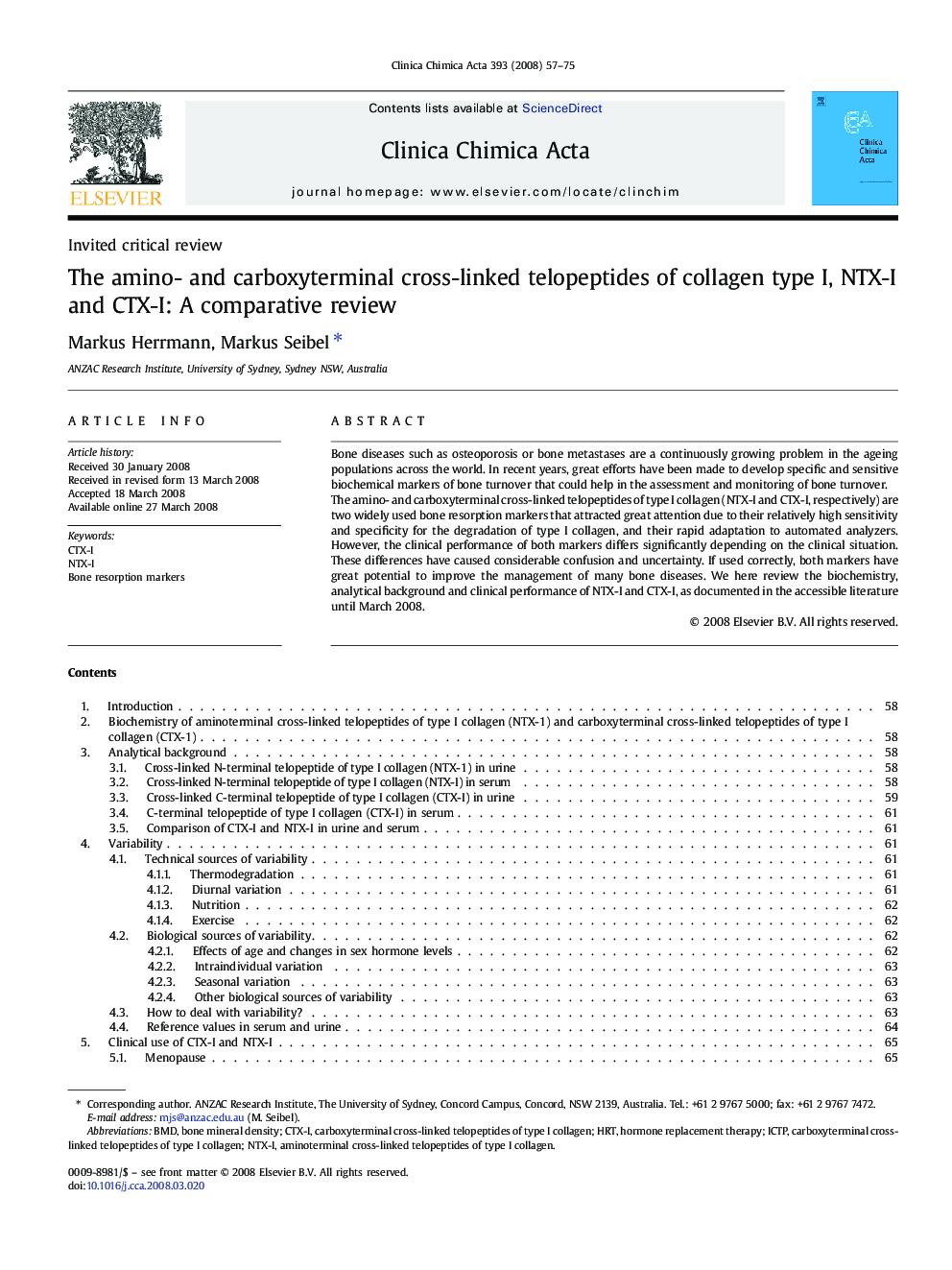| Article ID | Journal | Published Year | Pages | File Type |
|---|---|---|---|---|
| 1966890 | Clinica Chimica Acta | 2008 | 19 Pages |
Bone diseases such as osteoporosis or bone metastases are a continuously growing problem in the ageing populations across the world. In recent years, great efforts have been made to develop specific and sensitive biochemical markers of bone turnover that could help in the assessment and monitoring of bone turnover.The amino- and carboxyterminal cross-linked telopeptides of type I collagen (NTX-I and CTX-I, respectively) are two widely used bone resorption markers that attracted great attention due to their relatively high sensitivity and specificity for the degradation of type I collagen, and their rapid adaptation to automated analyzers. However, the clinical performance of both markers differs significantly depending on the clinical situation. These differences have caused considerable confusion and uncertainty. If used correctly, both markers have great potential to improve the management of many bone diseases. We here review the biochemistry, analytical background and clinical performance of NTX-I and CTX-I, as documented in the accessible literature until March 2008.
